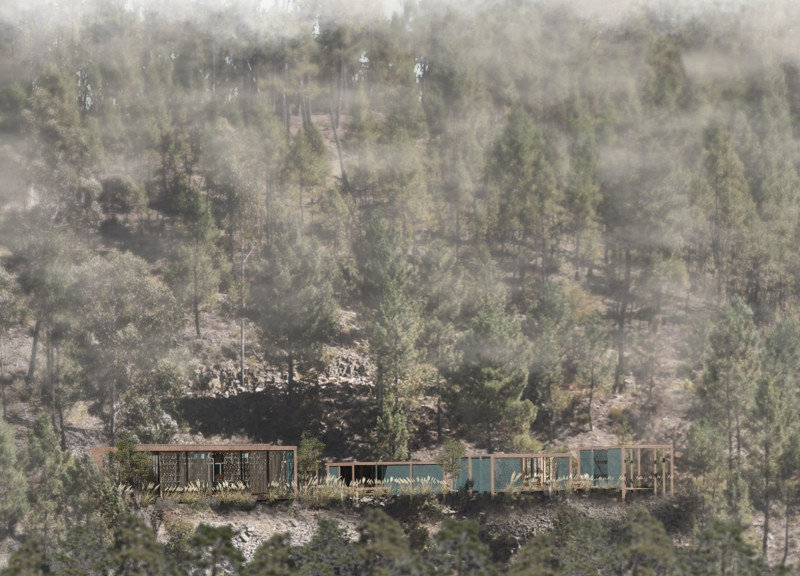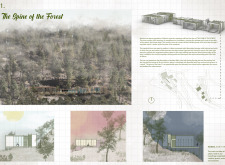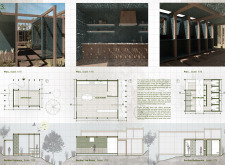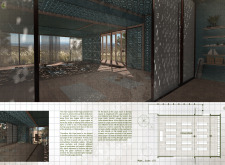5 key facts about this project
"The Spine of the Forest" is located in the serene landscape of Vale de Moses, designed for yoga and mindfulness practices. It emphasizes a deep connection with nature and uses the environment as an integral part of the experience. Central to the design is a main corridor, resembling a backbone, that connects various areas and guides movement through the space while offering moments for contemplation.
Spatial Organization
The central corridor unifies different spaces within the design. This pathway alternates between solid forms and open areas, providing users with a journey through functional and contemplative spaces. As individuals navigate the building, they encounter dedicated zones for meditation and relaxation, strengthening their ties to both nature and their inner selves.
Light and Atmosphere
Light plays a crucial role throughout the design. It enters through thoughtfully positioned openings, illuminating the corridor and adjacent rooms. The changing light creates a dynamic atmosphere, offering different experiences as the day progresses. This fluctuation enriches the daily interactions within the setting and helps foster a calm environment suitable for yoga practice.
Materiality
The structure primarily utilizes timber, which adds warmth, and incorporates MDF panels to define its framework. Timber establishes a natural feel that complements the surrounding landscape. The perforated MDF panels control light and manage sound, balancing the need for both privacy and community within the space while enhancing overall comfort.
Cultural Context
Patterns inspired by traditional Portuguese tiles (Azulejo) are woven into the perforated surfaces, enriching the design with a cultural narrative. This incorporation of local identity provides depth to the project, ensuring that it resonates with its geographical setting. The visual appeal of these patterns adds another layer, linking the architecture to its environment.
In the dedicated yoga area, an elevational design allows for improved visibility of the instructor. This thoughtful arrangement fosters engagement while eliminating the distraction of mirrors. The focus is on personal experience and movement, encouraging participants to connect with their practice and surroundings in a more meaningful way.






















































